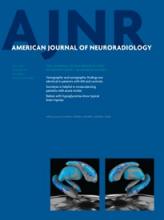Optical coherence tomography (OCT) is a catheter-based invasive intravascular imaging system that provides unprecedented microstructural information on atherosclerotic plaques. Multiple research teams have begun to explore the use of OCT imaging for carotid plaque assessment (with both occlusive1,2 and nonocclusive techniques3) to build on the positive experience already achieved in the coronary artery.
The available imaging systems for carotid plaque characterization, such as duplex sonography, angiography, and intravascular sonography, may not be able to clearly define and provide precise details in the measurement of microns regarding plaque profile and composition. Moreover, there is a huge interest in a more exhaustive examination of the stent-plaque interaction after carotid artery stent placement.
OCT with its high-resolution capability of 10 μm and its ability to define carotid plaque must be considered the innovative tool to define new indications for treatment and to provide new suggestions in the carotid angioplasty and stent placement (CAS) versus carotid endarterectomy debate and to provide new criteria for material choice during endovascular procedures.
In this issue of the American Journal of Neuroradiology, Given et al4 document the benefits of a new OCT system using a nonocclusive technique in the carotid artery. The authors should be congratulated on discovering this new protocol, which does not need iodinated contrast or balloon occlusion to obtain a blood-free environment. A simple hand injection of 50-mL heparinized saline solution allowed good-quality OCT images with no scattering and signal attenuation.
We have previously reported3 our experience in proving the safety and efficacy of Fourier domain (FD)-OCT in a series of 25 patients undergoing carotid stent placement during a nonocclusive flush and a mechanical injection of 24 mL of 50% diluted contrast. Notably, patients were excluded from the study in case of serum creatinine levels of >1.2 mg/dL, while kidney function was carefully monitored postoperatively in the included patients to assess the consequences of an extra amount of contrast medium needed for OCT image acquisition.
The absence of contrast in the proposed new protocol of FD-OCT imaging of human carotid arteries also carries no alarm for contrast-induced encephalopathy, which may occur when an extra dose of contrast agent is applied directly into the carotid artery.
OCT with proximal occlusion does not increase the amount of contrast either because the entire volume following imaging can be re-aspirated, but it requires extra carotid clamping time, which can cause cerebral intolerance.
On the other hand, the nonocclusive technique requires a high level of cooperation between the surgical team and the OCT technician to obtain high-quality images; to avoid OCT signal attenuation and artifacts, the pullback of the OCT catheter has to be unequivocally synchronized with blood displacement from the artery.
The only word of caution concerning the proposed new OCT protocol with heparinized saline solution should be concerning the large volumes of flush media injected directly into the carotid arteries. The authors hypothesized that a volume of 50 mL of heparinized saline solution can be naturally contained by the cerebral vasculature. Should the cerebral vasculature be unable to accommodate a larger volume of solution, this could cause a deregulation of the blood-brain barrier with possible neurologic sequelae.
A widespread application of OCT in the carotid arteries has the potential to provide important information not only in case of ambiguous DSA findings and/or discordant noninvasive data but also during CAS. Plaque prolapse through the cell stent has been suggested as one of the major causes of postprocedural complications after CAS,5,6 and OCT images can accurately recognize microdetails of the interaction between carotid plaque and stent.
After Given et al4 have proved that OCT imaging can be safely, easily, and efficiently applied to carotid arteries, future studies are now expected to investigate the relationship between carotid plaques and stents with regard to stent design and plaque composition.
In conclusion, OCT with its unprecedented in vivo definition of carotid plaque details after stent implantation may revolutionize our clinical policies. Physicians may be prone to refine their intraprocedural strategies following the findings by OCT, while industry may use OCT data to plan new stent designs with the best properties of plaque coverage, vessel conformability, and wall apposition.
REFERENCES
- © 2013 by American Journal of Neuroradiology












